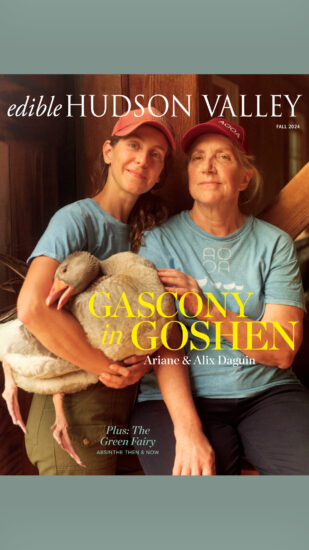Geoff Feder: Sculptor, Knifemaker
Geoff Feder came to the utilitarian world of knifemaking through the esoteric vehicle of sculpture, and—though his career wended through blacksmithing and culinary school—there is a through-line that connects the two pursuits. Form. Color. The ideas of utility and directionality.
“It’s, like, I’ve been inadvertently evolving since I was a dopey 18-year-old in college, right?” Feder says. “And trust me—it’s not fucking conscious.”
When Feder was a fine art major studying sculpture at Kenyon College, he and his friends occasionally dipped off campus to fish. Feder became entranced by fishing lures. “I was buying Rapalas, and the funny thing is that I always really liked them. Because if you go to a sporting goods store, you see these colors and you see these names, and you see these obscure shapes that you know aren’t in the wild.”
One of his sculpture professors issued an assignment: Take something small and make it large. Until this time, Feder’s medium had been metal. “But I found myself thinking, you know, it would be nice to have a little color. It would be nice to do some wood carving like I used to do when I was a kid,” he says. “So, I made this giant fishing lure. And it was awesome because it would change the way I thought about sculpture.”
The giant lure united a lot of ideas that Feder was already forming about the art world. Growing up in Manhattan, he loved Keith Haring’s work. The Crack is Wack mural (1986)—which was illegally installed on an abandoned handball court at 2nd Avenue and East 128th Street—was free for everyone to enjoy. Its message is not obscure, and its existence didn’t depend on a kingmaker gallerist. Feder was already bristling against the idea that, to succeed, he had to suck up to art world poohbahs. His lure sculptures had built-in patrons—he was already selling them by mail, with no gatekeeping gallerist involved.
RELATED: Joshua Prince (Princeworks Forge)
Feder’s father and sister were painters—he saw how they struggled with color. “I got so I hated painting because, you can tell—you can see the struggle in the painting. So, I thought, ‘Fuck it: I wanna go with primary colors. I want to go with real stark contrasts. I want to paint more like a printmaker.’”
Feder’s lure sculptures, like the lures in his tackle box, were painted in bright colors. And like the actual lures, his sculptures had directionality: implied movement. “In the sculptures, there’s form [obviously aquadynamic, a ‘head,’ a ‘tail’] and then there’s the way I painted them to suggest object movement, like repeating lines that give you a vibrating quality.”
The lure sculptures were problematic installations: gallerists felt the hooks were dangerous. Says Feder, “I mean, if this was a glass sculpture, you wouldn’t worry because you’re not supposed to touch it!” He went to three galleries, one of which forced him to put wine corks on the hooks; another, electrical connectors on the hook tips. Then there were the critiques: The work is too commercial, or the gallerist that disparaged the work as naïve, or, as Feder remembers, “folksy.”
One of his early installations was created purely out of spite. A brass caster had shared with Feder that he could make limitless copies of his work by simply pouring new casts. “I was, like, ‘Fuck those. I tell you what—my next sculpture I’m going to make 60 identical lures. Identical. I’m going to carve them all the same. I’m going to paint them all the same. Fuck you and your bronze castings, I’m going to do it all.’” The work was called Needles; it was 60 minutely identical needlefish lures that he carved and painted in assembly-line fashion, arranged on the gallery wall like schooling fish. Of the commitment to creating absolute uniformity by hand, Feder says, “It was the closest to madness that I’ve ever gone.”

Looking at a Feder knife today, you can see those hard-won lessons in practice. There are the bright, artificial colors of the G-10—a material like fiberglass—that mark his signature handles, so much like the eye-popping colors of lures. Even the rivets on the handles echo a lure’s flat, graphically rendered eyes. Then there is directionality. In form, Feder’s knives lean, they point, they have the implied velocity of a sports car. But that’s not all: Some also have diagonally inlaid G-10 that further suggests movement, like scoops and vents on a vintage Corvette. And, like the Needles installation, Feder is handcrafting his knife designs with the aim of precision and uniformity. Plus, the blades are sharp, like the hooks for which he took so much grief.
But the biggest through-line from Feder’s sculptures to his knives is the idea that he makes, markets, and distributes them himself, sans kingmaker. And for custom, hand-forged knives—which can easily exceed $100 per inch—they’re reasonably priced. You can buy a nine-inch French chef’s knife from Feder Knives for $490. He wants his knives to be accessible.
The battle between art and craftsmanship comes up often on his two popular podcasts, Full Blast and Knife Talk. “For years, I’ve been telling knifemakers that they’re not artists, and they’re all mad at me,” Feder says. “I’d say, ‘Is this sculpture? Can you bring this to a sculpture gallery?’”
“So, I go see my art professor this past spring, and I bring a knife because he taught me how to weld,” Feder says. “I learned about color from him and stuff like that. And the first thing he says is, ‘This is art.’”
“And I said, ‘God dammit, you ruined my whole bit!’”



